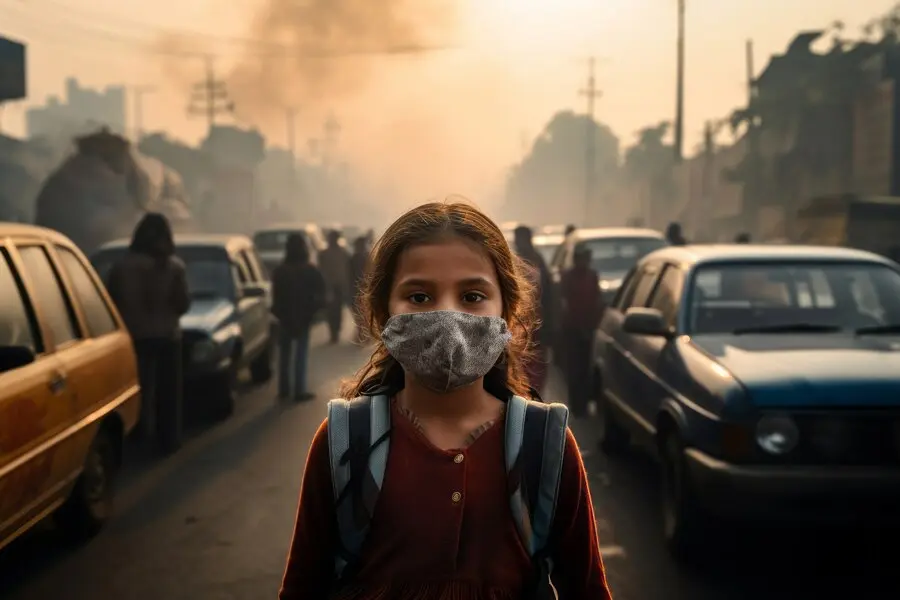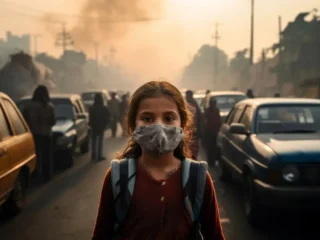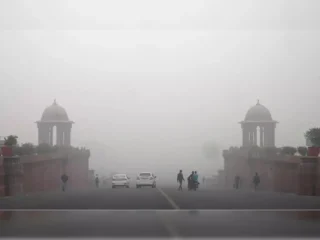New Delhi, 22 October, 2025: Every breath we take is vital—but what if the air itself is harming us?
With air pollution surging across cities, especially during winter and post-festival seasons, millions are unknowingly inhaling a dangerous cocktail of chemicals and particulates every day. While headlines often highlight pollution levels and AQI scores, what remains less understood is what actually happens inside your body when you’re exposed to toxic air.
From your nose to your lungs—and even to your brain and heart—air pollution doesn’t just irritate; it invades and disrupts. In this article, medical experts help break down how air pollution affects the human body and why its long-term consequences are far more severe than just a sore throat or watery eyes.
What Is In Polluted Air?
Polluted air is made up of a complex mix of harmful substances, including:
- Particulate matter (PM2.5 and PM10): Microscopic particles that can enter deep into your lungs and bloodstream.
- Nitrogen dioxide (NO₂): Primarily from vehicle emissions and industrial activities.
- Ozone (O₃): Formed when pollutants react in sunlight, damaging to lung tissue.
- Carbon monoxide (CO): A poisonous gas from incomplete combustion of fuel.
- Sulphur dioxide (SO₂): Emitted from burning fossil fuels like coal.
- Volatile organic compounds (VOCs): Released from paints, cleaning agents, and industrial processes.
Even in small amounts, these pollutants can cause significant physiological changes in the body.
What Happens When You Breathe Toxic Air?
1. Nose and Airways: First Line of Defense
When you inhale polluted air, your nose and upper airways act as the first filter. Large particles get trapped in the nose hairs or mucous lining. However, PM2.5 particles are so small they bypass this filter and travel directly down the respiratory tract.
Immediate symptoms may include:
- Sneezing
- Nasal congestion
- Irritated sinuses
- Dry throat or coughing
According to Dr. Randeep Guleria, former AIIMS Director and a pulmonologist, “These pollutants can trigger inflammation of the nasal passage and worsen pre-existing allergies like rhinitis or sinusitis.”
2. Lungs: The Invasion Deepens
Once the pollutants pass through the trachea and bronchi, they reach the alveoli—tiny air sacs in the lungs where gas exchange happens.
Here, the real damage begins:
- PM2.5 and ultrafine particles penetrate deep into the alveoli.
- They trigger an inflammatory response, causing the body to treat them like invaders.
- Over time, this leads to scarring of lung tissue, reduced elasticity, and impaired lung function.
Chronic exposure can lead to:
- Asthma exacerbation
- Bronchitis
- Chronic Obstructive Pulmonary Disease (COPD)
- Reduced lung growth in children
“Pollution particles lead to oxidative stress in the lungs, weakening the immune defenses and making individuals prone to infections,” says Dr. Arvind Kumar, Chairman, Institute of Chest Surgery, Medanta Hospital.
3. Bloodstream: Pollutants Enter Circulation
What makes PM2.5 particles especially dangerous is their ability to cross the alveolar barrier and enter the bloodstream.
Once in circulation:
- These particles trigger systemic inflammation, impacting organs far beyond the lungs.
- They can cause endothelial dysfunction (damage to blood vessel linings), promoting the formation of clots.
- They increase levels of C-reactive protein (CRP), a marker of inflammation linked to heart disease.
This can result in:
- Hypertension (high blood pressure)
- Atherosclerosis (hardening of arteries)
- Heart attacks and strokes
- Irregular heartbeats (arrhythmia)
The World Health Organization states that air pollution is responsible for over 7 million premature deaths annually, a significant portion due to cardiovascular complications.
4. Brain: Cognitive and Mental Health Effects
Air pollution doesn’t just stop at physical illness—it affects your brain too.
Recent studies show that pollutants can breach the blood-brain barrier, causing inflammation in the brain tissue. This has been linked to:
- Cognitive decline
- Increased risk of Alzheimer’s and Parkinson’s disease
- Mental health issues like depression and anxiety
- Impaired memory and attention in children
According to a Lancet study, children exposed to high air pollution levels perform poorly on IQ and memory tests, indicating long-term developmental risks.
5. Reproductive System and Fertility
Emerging research suggests that air pollution may impair reproductive health in both men and women.
In men:
- Exposure to heavy metals and VOCs can reduce sperm count and motility.
- It may also increase the risk of testicular dysfunction.
In women:
- Polluted air may affect hormonal balance, ovarian reserve, and even lead to menstrual irregularities.
- Exposure during pregnancy has been linked to preterm birth, low birth weight, and developmental issues in babies.
6. Skin and Eyes: External Indicators
Pollutants in the air directly contact the skin and eyes, leading to:
- Skin inflammation, premature aging, acne, and eczema
- Eye irritation, dryness, redness, and allergic conjunctivitis
Dermatologists report a significant rise in pollution-related skin disorders, especially in metro cities.
Who Is Most at Risk?
While air pollution affects everyone, certain groups are more vulnerable:
- Children: Their lungs are still developing, and they breathe faster than adults.
- Elderly people: Pre-existing conditions make them more susceptible to cardiovascular and respiratory complications.
- People with asthma, COPD, or heart disease
- Outdoor workers, such as traffic police, delivery workers, and street vendors
- Pregnant women and their unborn children
Symptoms to Watch For
Exposure to polluted air may not always cause immediate distress, but here are some common signs your body may be reacting:
- Increased sensitivity to allergens
- Persistent cough or wheezing
- Shortness of breath
- Chest discomfort
- Fatigue and general weakness
- Headaches or dizziness
Air pollution is more than just a smoggy skyline or an uncomfortable day outdoors. It’s a health emergency, silently impacting every organ of the body—from lungs and heart to brain and skin.
Understanding what actually happens inside your body when you breathe toxic air can empower you to take preventive steps and demand cleaner, safer environments.
Because clean air is not a luxury—it’s a human right.





